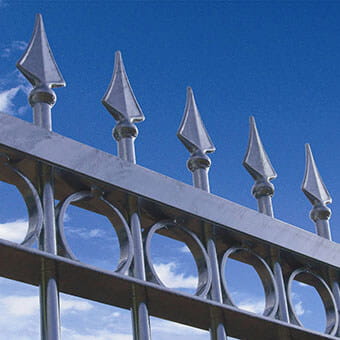Our other sites:
Allotments have long been a beloved part of British life, offering individuals the opportunity to grow their own food, engage with nature, and enjoy the benefits of gardening. As the desire for self-sufficiency and local food sourcing grows, so too does the popularity of allotments. Today, with the rise of interest in organic gardening and sustainability, around 330,000 allotment holders populate the UK, according to the National Allotment Society (NAS). Unfortunately, allotments do not come without the risk of theft and vandalism, and less severely, animal encroachment. This makes allotment security fencing not just a luxury but a necessity for councils wanting to provide safe and secure spaces and happy communities, and also justify rental prices. In this blog post, we’ll explore the risks associated with allotments, why security fencing is essential, and the types of fencing that best balance security and wildlife preservation.
While the benefits of allotments are abundant, the risks associated with these spaces should not be overlooked. Without proper security fencing, allotments can fall victim to theft, vandalism, or damage caused by wildlife. Hence, ensuring the safety of your allotment through secure fencing is crucial to protecting the hard work of communities.
Risks Around Allotments
- Theft: Theft is one of the most common problems faced by allotment holders. Thieves often target gardening tools, plants, and produce. Items like wheelbarrows, watering cans, and gardening tools are especially tempting for opportunistic criminals, even when stored in sheds on site.
- Vandalism: Allotments can also become victims of vandalism, from destruction of crops to shed and greenhouse fires. The isolated location of many plots makes them susceptible to such criminal behaviour.
- Wildlife Damage: While small wildlife like hedgehogs can be a delightful addition to an allotment, certain animals such as badgers, deer, and foxes can cause significant damage to crops. Domestic dogs that have been let off lead in public spaces should also be stopped from entering.
- Trespassing and Anti-Social Behaviour: Unfortunately, allotments can attract unwanted visitors who engage in anti-social behaviour and use the space for illicit activities.
These risks highlight the importance of securing your allotment with effective fencing that not only deters theft and vandalism but also creates a good balance for helping wildlife to thrive while keeping out animals that can damage crops.
Allotment Security Fencing Types
Fencing plays a vital role in safeguarding allotments from the various risks discussed above. A well-chosen fence not only secures the plot but also provides a welcoming environment that increases user satisfaction; ensuring plots remain safe while looking good and allowing beneficial animals to pass through. Let’s take a closer look at the different types of fencing suitable for allotments.
-
Mesh Security Fencing
Mesh security fencing is a popular and versatile option for allotments as it is lower cost than other fence types. It is effective at preventing human intruders from entering, as well as deterring larger animals, like badgers and dogs. However, mesh fencing must be selected carefully to avoid causing harm to smaller animals, such as hedgehogs and rabbits, which may become trapped in the gaps.

Key Considerations:
-
Metal Railings
Metal railings are a robust and attractive option for allotment fencing. Not only do they provide a strong physical barrier to deter intruders, but they also allow for visibility into your plot, which can be aesthetically pleasing in certain settings. Modern metal railings are made from galvanised tubular steel, making them strong and durable against rust in places where foliage will regularly touching the fence, creating damp conditions. Out of all the options, they are the most aesthetically pleasing, contributing to a welcoming environment. The downside to this of course is that deterrence is not built in.

Key Features:
-
Vertical Bar Railings
Vertical bar railings are another popular choice for allotment fencing, particularly in areas where security is a major concern. These fences are designed to be tall and imposing, deterring both thieves and unwanted guests. Vertical bar railings are strong and provide a high level of security without compromising on aesthetics. Where triple point palisade is being considered, vertical bar railings are the more secure and better looking alternative, with the same principles.

Key Features:
Green Fencing
Here, we are referring to the actual colour of the fencing. Green fencing is popular around allotments as it blends in as much as possible with the natural surroundings. Opt for polyester powder coated steel fencing rather than painted fencing, as this will provide a long lasting, high quality finish that does not require frequent repainting.

Avoid Steel Palisade Fencing
While steel palisade fencing is often used in commercial or industrial settings, it is not ideal for allotments, but is often used. Steel palisade fences, with their sharp, jagged tops, can create a fortress-like atmosphere that is unwelcoming, unfriendly and can potentially have a negative impact on our mood in an environment designed to enjoy and relax. Additionally, steel palisade poses a risk to wildlife, as the sharp points at the top can harm birds or other creatures that may attempt to land or rest on the fence.
Related Products
Jacksons Fencing have a large range of related products, all complete with our 25 year guarantee. If you cannot find the item you are looking for, please do not hesitate to call our friendly sales team.
Related Content
Top






